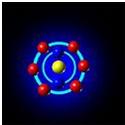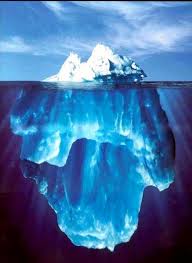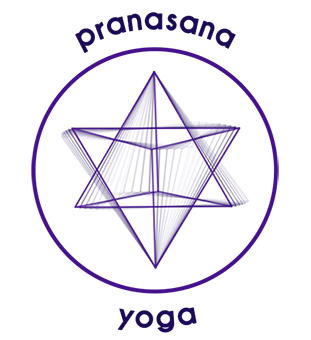Pranayam/a
Prana means breath, respiration, life, vitality, energy or strength. When used in the plural, it denotes certain vital breaths or currents of energy (prana-vayus). Ayama means ‘stretch’, extension, expansion, length, breadth, regulation, prolongation, restraint or control. Pranayama, thus means the prolongation of the breath and its restraint.
It is an art and has techniques which make the respiratory organs move and expand intentionally, rhythmically and intensively. It consists of inhalation, which stimulates the system, exhalation which throws out the vitiated air and toxins and kumbhaka, retention, which distributes the energy throughout the body.
Breath is the bridge between the body, senses and the mind. Such disciplined breathing helps the mind to concentrate and enables the aspirant to attain a robust health and longevity. Asanas or postures remove obstructions which impede the body’s energy current, pranayama regulates this vital flow. It also regulates thoughts, desires and actions, giving one the poise and will power needed to become a master of oneself.
Light on Pranayama by BKS Iyengar p 14
What is the Breath and what is a ‘breathing practice’?
Breath is life. We know that with breath there is life and without oxygen the brain is harmed, which can lead to death.
The breath therefore sustains all vital functions of the human body. All of our cells rely upon oxygen, which is delivered by the breath. The more efficient the breathing process, the more efficient the delivery and uptake of oxygen supply to the organs, glands, tissues and cells.

Oxygen
I will discuss the actual process of breathing in more detail shortly.
A breathing practice is the awareness that you give to your breathing.
When you take a few moments or minutes on a regular basis, this can be termed a breathing practice.
“How can I practice breathing? How can I practice something which is totally natural and which I can’t survive without, even if I tried?”
Well this is absolutely true. Your practice is to observe a process which is always occurring in you and do so on a regular basis.
The breath is the one bodily function which is under the control of the conscious and unconscious mind.

Conscious Mind is above water.
Unconscious is below!
The breath is the medium to allow the conscious mind to tap into the unconscious mind. This integration allows for the reprogramming of the mind and its patterns, to achieve a more refined and desired state of being and thinking.
Highly advanced practitioners are able to lower the pulse dramatically; the most advanced can even stop their heart. Naturally this is not something that we are covering in this course, I just use this classic example to demonstrate that access to the unconscious mind, gives access to the involuntary nervous system as well as to limitless amounts of information, which are stored in what Jung termed the ‘collective unconsciousness’.
Let’s pause for a moment.
When we take this pause, quite spontaneously it is usually followed by a nice deep inhale.
It may be that you were exhaling or began exhaling also.
This is all stating the obvious isn’t it?
Well yes it is.
It is so obvious but that’s not the same thing as being conscious.
If you are conscious of HOW YOU BREATHE then you are in the right place to review whether you would like to change or improve anything about it.
When you feel happy, relaxed, calm and free, how is your breathing?
When you are hyped up, how is your breathing?
When you make life changing decisions how is your breathing?
I’ll return to the idea of successful people. The one thing that they all have in common is that they are calm and relaxed. The world’s greatest long distance runner may be tired when she/he finishes an event, but if you observe runners, you’ll see that the very best ones seem to look the least tired, the most relaxed. This is harmony, or the LAW OF LEAST EFFORT in effect. These runners are performing their practice, their WAY. They do what they ARE and they feel freedom because of this. They are in tune with their inner purpose and so they are doing what comes to them naturally.
The good news here is that the breath comes to us all naturally.
Even those who have breathing difficulties (remember my story), experience the process of breathing as a natural phenomenon.
By the process of nature, the lungs expel or draw in air. Whether there are restrictions or conflicts with this process, the truth is that ‘gaseous exchange’ between the lungs (including artificial ones) and the outside world, is a process of nature.
Extracted from How To Breathe by Matt Gluck
of Pranasana Yoga
Ride the river of Breath, listening and following, yielding, not controlling. When you finish, the state of your mind is the ultimate indicator of the quality of your practice.
With the gaze turned inwards and fixed on the space between the eyebrows
Where the three nadis – ida, pingala and sushumna – meet;
Stopping the breath moving through the left and right nostrils
And equlasing the outgoing and incoming breaths,
They make the mind steady in the Sahasrara at the crown of the head.
Just as when the Ganges reaches the ocean, carrying with it the water from the streets,
The different streams cannot be distinguished ,
Similarly, all distinctions between various desires cease when the mind becomes stilled in the inner space
By controlling the breath.
Then, look! The mental canvas with the painting of worldly existence is torn apart,
Just as reflections disappear when a lake dries up,
When the mind has stopped functioning, where is there any place for egoism?
Therefore a person who has realised the Self, becomes God while still in the body.
From Jnaneshwar’s Gita p65
Each of the following Pranayamas targets the Chakras in ascending order:-
1. The Full Yogic Breath (Muladhara – Root)
Exhale fully, by relaxing and releasing as you breathe out. At the end of the breath, breathe out again to empty the very bottom of the lungs. Become aware of your pelvic floor, legs and feet.
Now relax your mind into your lower belly and watch the inbreath flow inwards to fill the vacuum. Pause at the top of the inbreath and repeat a few times.
The cycle begins with noticing the lower warmer, the pelvic floor and belly, expand with the inhalation and draw upwards and backwards with the exhalation. As the breath energy overflows the inhale will also begin to pack the ribcage, which is the middle warmer and then lastly the breath will overflow to the top lungs, collars, neck and brain.
This full yogic breath fills the ‘Kumbhak’ or pot from the pelvic floor to the brain and then reverses for the exhalation.
2. Bhastrika (Svadisthana- Sacral)
Bhastika means a bellows used in a furnace. Here the air is forcibly drawn in and out as with a blaksmith’s bellows. Prepare with full yogic breathing. Take a fast vigorous breath and then exhale forcibly. One inhalation and exhalation completes a cycle of Bhastrika. The sound made resembles air rushing through a bellows. Practice a stretch of 10 rounds and then perform inhalation retention in between (with Mula Banha – root lock) for a few seconds. Then rest for a few seconds with Ujjayi breath (haaaaaa) so that the lungs and diaphragm rest and return to normal size.
Bhastrika invigorates the liver, spleen, pancreas and abdominal muscles. Thus digestion is improved, the sinuses are drained, the eyes feel cool and one has a general sense of exhilaration.
Contra Indications; weakness, high or low BP, eye ear complaints
3. Uddiyana – (Manipura- Solar)
Uddiyana means flying up. Strictly speaking Uddiyana is a bandha, a restraint and not a pranayama. As condensors, fuses and switches control the flow of electricity, so bandhas regulate the flow of prana (energy). In this bandha the prana is made to move from the lower abdomen towards the head.
Uddiyana tones the abdominal organs, increases the gastric fire and eliminates toxins in the digestive tract. Raises the energy levels and can alleviate depression and lethargy
Contraindications; pregnant, high B.P.
4. i Sahita Antara Kumbhaka – Intentional Inhalation retention and ii Nadi Shodana – Nerve Purification – (Anahata – Heart)
4i. Antara Kumbhaka – Retain the breath in a state of suspense. Withdrawal of the intellect from the organs of perception and action, to focus on the seat of the Self or Atma, the origin of consciousness. Kumbhaka keeps the aspirant silent at the physical, moral, mental and spiritual levels. The brain is kept in a relaxed state always.
Contraindications – pregnant, hight BP, head ache, dizzy
4ii. Nadi Shodana – Altenative nostril breathing. This is the most advanced of pranayamas and may be practiced in a variety of ways. The brain is divided into two hemispheres, the left controlling the right side of the body and vice versa. The back brain at the skull base is more primitive and is the contemplative brain or seat of wisdom. The frontal one is the calculative brain that deals with the external world. The Yogis of old discovered Nadi Shodana, which allowed the in and out breaths to pass through each nostril in turn, revitalised both hemispheres of the brain in the front back, top and bottom. The mind becomes one pointed and fit for concentration. Nerves are calmed and purified, the body keeps warm, diseases are destroyed and one becomes strong and serene. Nadi Shodana leads to right living, right thinking, quick action and sound judgement.
Contraindications; go gently, avoid retention if pregnant or high BP. Be patient.
5. Ujjayi (Throat) – Seetkari – Seetali
Ujjayi breathing is the foundation of pranayama and aspects of it are practiced in nearly every form of pranayama. Ujjayi means ‘victoriously uprising’, which refers to the expansion and movement of the energy of the breath – the prana – through the central channel for pranic energy, located within the spinal cord, known as sushumna nadi. We are more familiar with the expansive quality of the breath as the expansive uplifted and refreshed feeling we have in the area of the chest and heart – the home of the prana, as we inhale. The more esoteric experience of the upward movement of energy at the central core comes with the attentive practice of the Ujjayi breath and of the bandhas and is a key to deeper states of meditation.
Sitali inhalation is done through the mouth through the curled tongue, while exhalation is through the nose, using Ujjayi breath.
Sitakari is that which causes cold. It is a variation of Sitali pranayama. The breath is drawn in with a hissing sound between the two lips. The lips are kept slightly apart and the tip of the tongue protrudes out slightly.
These two pranayamas cool the system and the soothe the eyes and ears. They activate the liver and spleen, improve digestion and relieve thirst. They can both be done when the nostrils are blocked.
6. Bhramari – with the eyes gazing to Third Eye
Bhramana means a large black bumble bee. During exhalation a bee’s soft humming sound is made. The best time to practice it is in the silence and quiet of night. This pranayama is very calming and draws the senses inwards well.
7. Bhramari – Kapalabhati (Crown)
Bhramari as above.
Kapalabhati Kapala means skull and bhati is light or lustre. Inhalation is slow and exhalation is vigorous, with a split second of retention after each outbreath.
This pranayama activates the liver, spleen, pancreas and abdominal muscles and improves digestion. It drains the sinuses and stops the nose running. It creates a feeling of exhilaration as the seminal energy charges up the brain.
Contraindications; if the constitution is very weak then avoid Kapalabhati as they may damage blood vessels and the brain.
Most of these summaries are extracted directly from the following;-
Swami Satyananda Saraswati
Light on Pranayama – BKS Iyengar
Refining the Breath – Doug Keller
This document was compiled by Matt Gluck 2007
For more about pranayam or qi gong from Matt Gluck, try his book or DVD’s How To Breathe.
